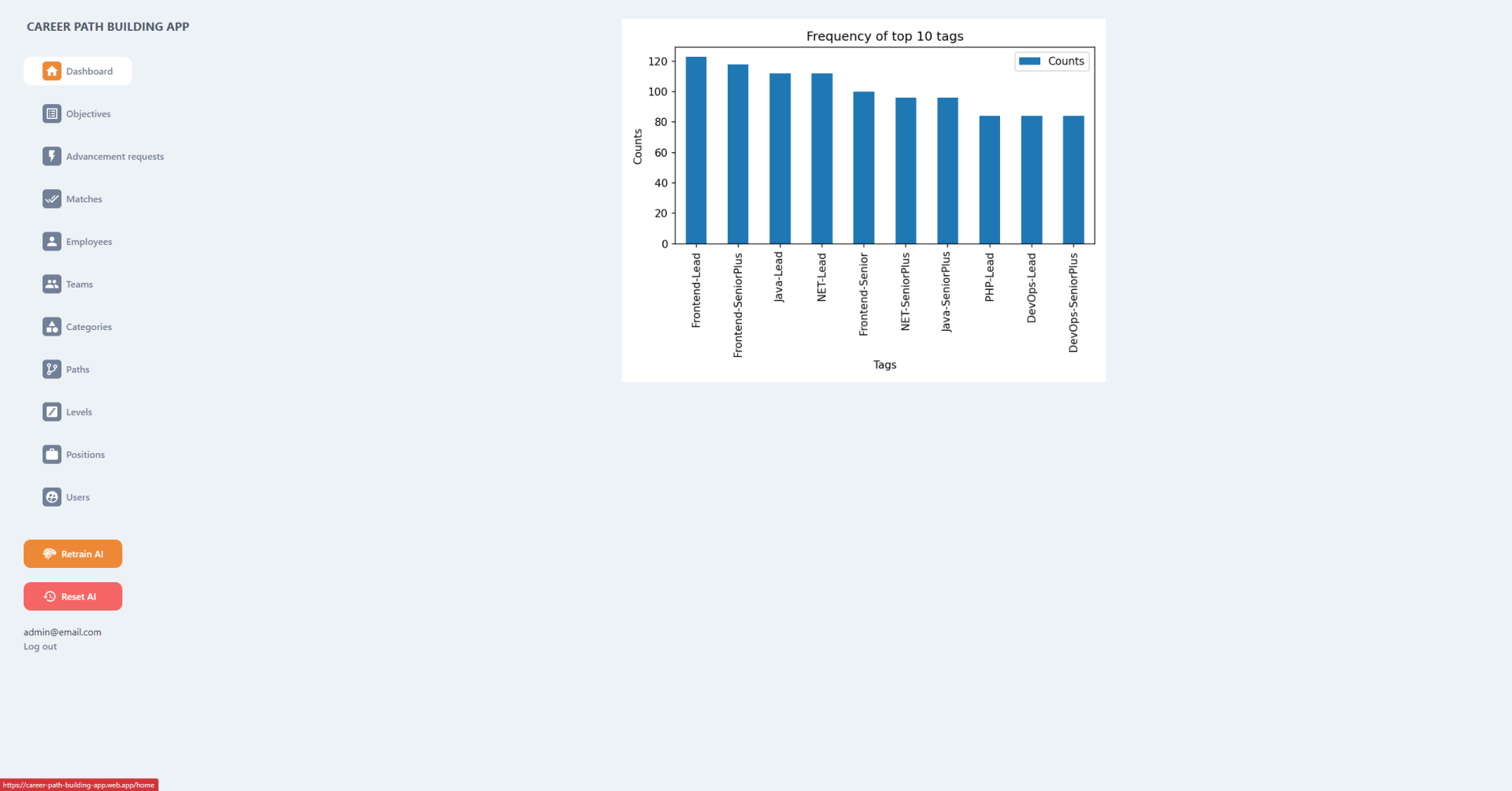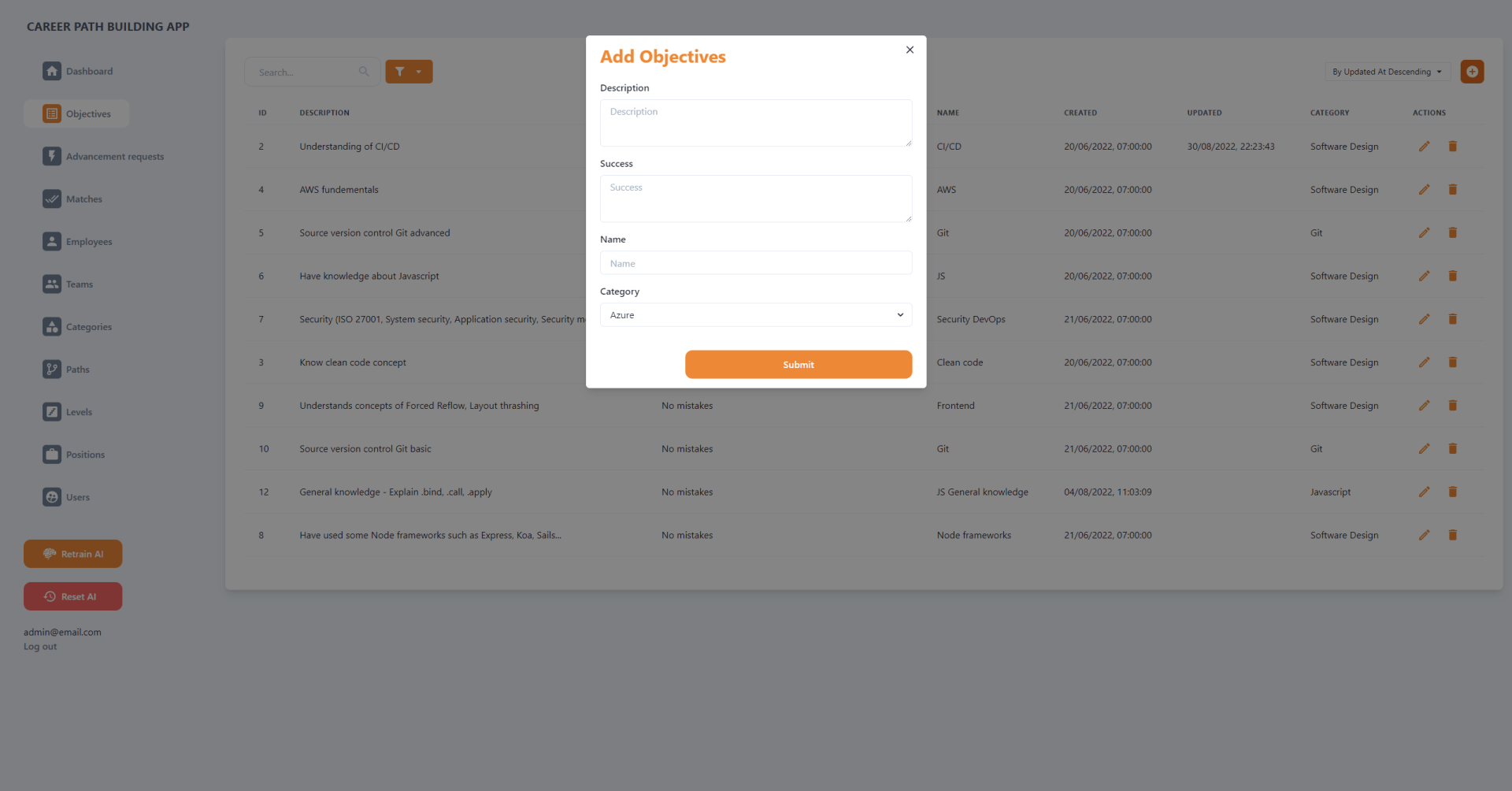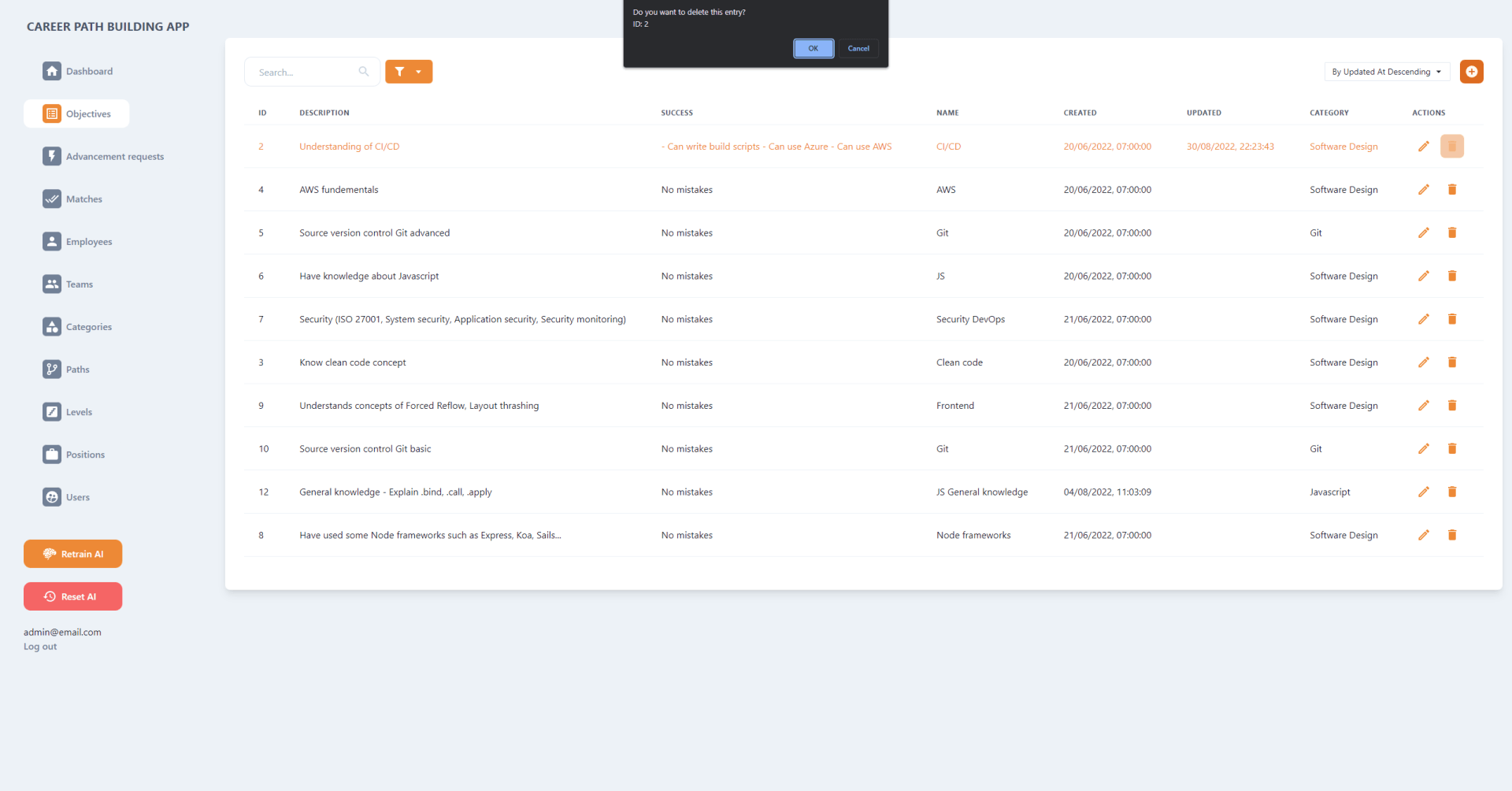Career Path Building Prototype
Pham Le Gia Minh
Tran Cat Duy
Tran Minh Duy
Bui Tien Huy
The Career Path Building Prototype is, as its name suggests, a system to help keep track of employees’ career path within a company. The system differs from other similar objective management applications in that it utilises an AI (Artificial Intelligence) to match objectives, input from managers and administrators, with positions it deems appropriate. The main goal of the system is the tremendous benefit of reducing time-consuming, and repetitive tasks since the administrators/managers don’t have to manually match each objective to a position.
In detail, the system consists of 3 main components: the web application, the Slack bot, and the AI. First, the Slack bot is the main interface which employees will interact with to advance a level in their career path or switch to an entirely different path. Employees will be able to see the objectives of their next career path level or the first level in the path when choosing advance or switch, respectively. In addition, each request from will be created as a row in the database and these records will be editable by administrators and managers.
This brings us to the web application, the main interface which administrators and managers can use to manage tables in the database through performing CRUD (Create Read Update Delete) functions. There are in total 10 tables in the database and only 4 of them: teams, employees, advancement requests, and matches are editable by managers. Additionally, the web application also includes functionalities to retrain and reset the AI model based on the newly updated recorded matches between positions and objectives in the database.
Last but not least is the AI component that handles the matching. It's a noninteractive component which end users can't modify and is only available to developers of the system with access to the codebase. The AI is constantly retrained based on training datasets supplied by the client to increase its accuracy and when the system is used in practice, administrators also have the ability to train it based on certain data recorded in the database (as mentioned in the above section).





Demo Video




